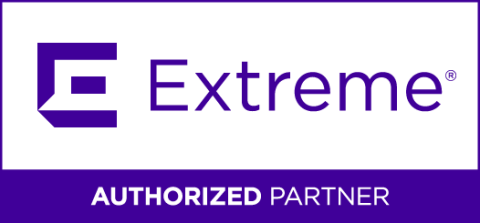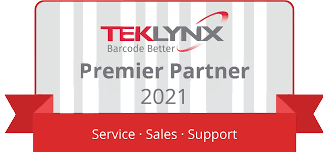
In today’s fast-paced and competitive business environment, effective inventory management is a critical success factor that can make or break a company’s profitability and customer satisfaction. Maintaining the right balance of inventory is a delicate art, and getting it right can lead to significant cost savings and improved operational efficiency. Here, we explore the reasons why businesses need to optimize their inventory management and strategies to overcome the challenges associated with inefficient stock control.
Why Businesses Need to Optimize Inventory Management
Ineffective inventory management can significantly harm a business in several ways. To avoid these negative consequences, businesses must prioritize efficient inventory management to optimize their operations, maintain customer satisfaction, and ensure financial health. Here’s why:
-
Cost Efficiency: One of the primary reasons to optimize inventory management is cost efficiency. Excessive inventory ties up capital and increases storage costs, while insufficient inventory can lead to stockouts, emergency orders, and costly rush shipments. Striking the right balance helps reduce carrying costs, minimize the risk of overstocking or understocking, and ultimately save money.
-
Customer Satisfaction: Customers today expect quick and reliable delivery. Effective inventory management ensures that products are readily available to meet customer demand, reducing the chances of backorders and long lead times. Satisfied customers are more likely to remain loyal and recommend your business to others.
-
Waste Reduction: Overstocked inventory can become obsolete, leading to losses through depreciation and obsolescence. On the other hand, understocked inventory may result in wasted production time and missed sales opportunities. Optimizing inventory minimizes waste and maximizes the utility of available resources.
-
Improved Cash Flow: By reducing the amount of capital tied up in excess inventory, businesses can improve cash flow and invest those funds in more productive areas such as innovation, marketing, or expanding their operations.
Strategies for Optimizing Inventory Management
Optimizing inventory management is a critical task for businesses to reduce costs and improve customer satisfaction. Here are some of the best strategies to achieve this:
-
Modern Technologies: Modern technology solutions such as barcode scanners, mobile computers, and Radio-Frequency Identification (RFID) systems provide real-time visibility and tracking of goods. These technologies enhance accuracy, streamline workflows, and enable businesses to make data-driven decisions.
-
Implement Just-in-Time (JIT) Inventory: JIT inventory strategies help minimize excess stock by ordering and receiving products only as they are needed. This approach reduces carrying costs and minimizes the risk of overstocking.
-
Use ABC Analysis: Categorize inventory into A, B, and C items based on their value, and prioritize management efforts accordingly. A-items are high-value, and tight control is required, while C-items are low-value and can be managed more loosely.
-
Invest in Inventory Management Software: Modern software provides real-time visibility, demand forecasting, and automation of routine tasks. This helps you make data-driven decisions and respond quickly to market fluctuations. A Warehouse Management System (WMS) is a popular software application that offers real-time visibility into your stock levels, automates routine tasks, streamlines order processing and fulfillment, and elevates your overall business operations.
-
Regular Audits and Cycle Counts: Conduct regular inventory audits and cycle counts to ensure accuracy and identify discrepancies promptly. This helps in reducing shrinkage and maintaining precise inventory records.
-
Supplier Collaboration: Collaborate closely with suppliers to streamline the supply chain. Establish reliable communication channels, share forecasts, and work together to optimize lead times, order quantities, and delivery schedules.
-
Continuous Improvement: Implement a culture of continuous improvement by monitoring performance metrics, analyzing historical data, and adapting to changes in demand. Regularly review and adjust inventory management strategies based on new information and market conditions.
-
Data Analytics and Forecasting: Leverage data analytics and forecasting tools to predict future demand accurately. By analyzing historical sales data and market trends, businesses can make informed decisions on stock levels and ordering patterns.
-
Demand Planning: Implement robust demand planning processes to align inventory levels with anticipated demand. Accurate demand forecasting ensures that the right products are available at the right time.
How Businesses Can Optimize Inventory Management
Optimizing inventory management is not merely an option; it is a strategic necessity for businesses aiming to remain competitive and profitable. By investing in technology, embracing efficient strategies, and maintaining a culture of continuous improvement, companies can enhance cost-efficiency, satisfy customers, reduce waste, and ultimately thrive in the dynamic world of modern business. In doing so, businesses will position themselves for success in a highly competitive marketplace, where efficiency and customer satisfaction are paramount. Take action today and Contact a ValuTrack Technology Specialist to learn more about how we can help you optimize your inventory management process.

Explore Warehouse Management Systems
A comprehensive Warehouse Management System (WMS) provides real-time visibility into inventory levels, streamlines order management processes and offers robust reporting and analytics capabilities. ValuTrack has 30+ years of experience helping warehouses and distributors improve data accuracy during receiving, picking, packing, and shipping. You can trust us to implement scalable and customizable WMS solutions that integrate seamlessly with other enterprise systems, enabling your organization to drive operational efficiency and enhance overall warehouse productivity.
We’re Here to Help
Contact us to Start the Modernization Process
Looking for more information about a specific technology solution? Feel free to ask us about pricing, data sheets, and demos, or schedule a free in-person/online consultation for strategic guidance from one of our experts.
Fill out the inquiry form or contact us to start the process.










